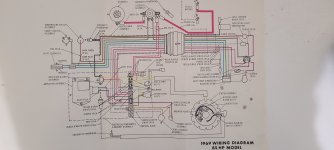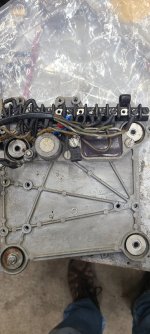68glasspar
Petty Officer 3rd Class
- Joined
- Aug 28, 2024
- Messages
- 93
!969 85hp Starflite/ model 85993. I was out briefly on the water and volt meter indicted 13.5 to 14volts but the jumped to 16.5+volts. Idled back to the pier and out of the water.
I had previously replaced the rectifier with a nos part due to the wire insulation falling off.
What actually controls the voltage output on this motor? I don't see anything labeled as a voltage regulator in the wiring diagram.
Also whats the best spark plug for this motor? service manual says L-19V champion
I had previously replaced the rectifier with a nos part due to the wire insulation falling off.
What actually controls the voltage output on this motor? I don't see anything labeled as a voltage regulator in the wiring diagram.
Also whats the best spark plug for this motor? service manual says L-19V champion





















